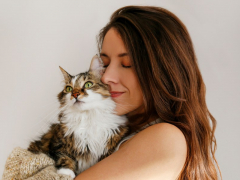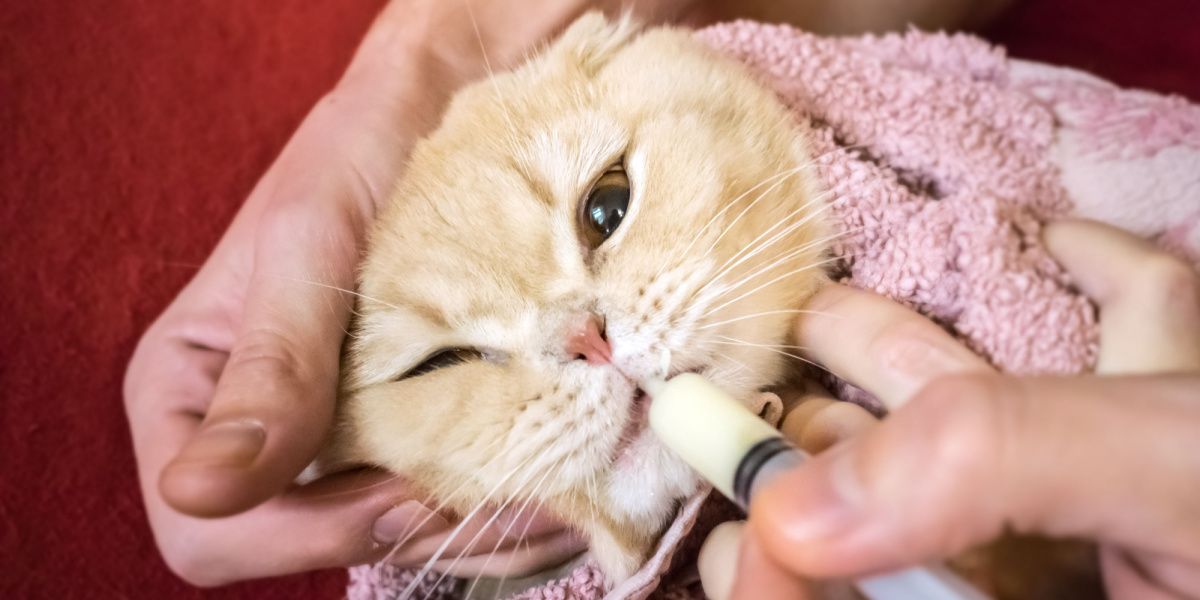
When our cats are unwell it can be a very stressful time. It can be even more stressful if you have to give your cat liquid medication at home. If you have never had to medicate your cat, it can be a very daunting task.
Most cats can be tempted to take liquid medicine in their favorite wet food or a tasty treat. Another technique involves creating a "cat burrito" by wrapping your cat in a towel and administering the medication into the side of their mouth. If you continue to struggle after trying these techniques, talk to your vet about alternative options like tablets or injections.Key Takeaways
Even for seasoned cat owners, giving liquid medication is not always an easy task. Some cats are very skilled at detecting and avoiding medication. Read on for tips on how to administer cat liquid medications.
Methods of Giving Cats Liquid Medicine
The easiest and most stress-free way of administering liquid medication to cats, is mixing the medication into cat food. This won’t work with every cat or for every medication, but it does work with a surprising number of cats.
Mixing the Medicine into Food
Make sure to choose a yummy wet food and give it at a time your cat is hungry. You might need to delay your cat’s normal meal a bit to ensure they are hungry enough to eat the food that contains the medication. Mix the liquid medication into a small amount of wet or canned food. If you offer too much food, your cat might get full halfway through and you won’t know how much medication they actually ingested.
Layering the Food and Medication
You can also try “layering” the food. This is done by putting a normal bit of wet food on the bottom, then the medicine and then another bit of normal wet food on top. With this method, your cat starts and finishes with normal food without the taste of medicine.
If they start eating and taste the medicine first, they might stop eating. The layering method or just mixing it in very well to food, should help to disguise the taste.
Use Treats
Some cats are very food motivated and might take the liquid medicine in one of their favorite treats; either a pocket-type treat or a liquid treat. It’s worth trying this if your cat won’t take the medicine in their normal food.
Keep Other Pets Away
Monitor your cat from a distance to make sure that they’ve eaten the medication and then give them more wet food afterwards. It’s important that you keep other cats and pets away when you’re giving medicine to your cat, or they may accidentally ingest it!
9 Steps to Giving a Cat Liquid Medicine
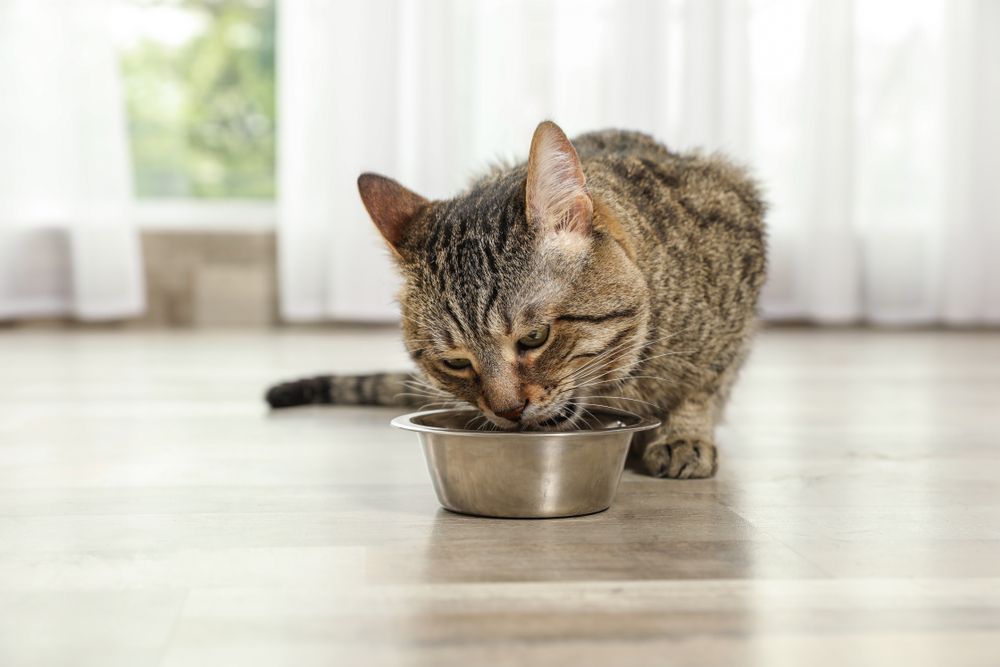
One of the easiest ways to give cats liquid medicine is mixing it into a small amount of food or treats.
If mixing the liquid medication into food doesn’t work, it’s likely that you’ll have to administer the liquid medication by hand. If your cat is very cooperative, this can simply be done by holding them and slowly administering the liquid into the side of their mouth with a syringe or dropper.
However, many cats are not agreeable to taking liquid medicine, so you might need to try the approach below, which I commonly use on my own cats and cat’s in the veterinary clinic. We’ve included some step by step instructions on how to do this.
Stay Calm
Firstly, it’s important to stay calm. If you start getting anxious or nervous before medicating your cat, it’s likely that they’ll sense this. This might cause them to sense that something is going to happen and become nervous. This will cause stress around the time of medicating.
Find a Quiet Area
You want to find a quiet and calm area to medicate your cat. Avoid areas that are noisy or have other pets in the room. This will only distract your cat and make them anxious. A calm, quiet environment will encourage your cat to be relaxed. The medicating process should be as stress-free as possible.
Get Everything Ready
Before you start to medicate your cat, you should have everything you need at hand. Prepare the liquid medication in a syringe or dropper and have it close by. Have a large towel ready and another person to help if needed.
I find it easier to position myself next to a table but some people might find it easier on the floor.
Towel Wrap
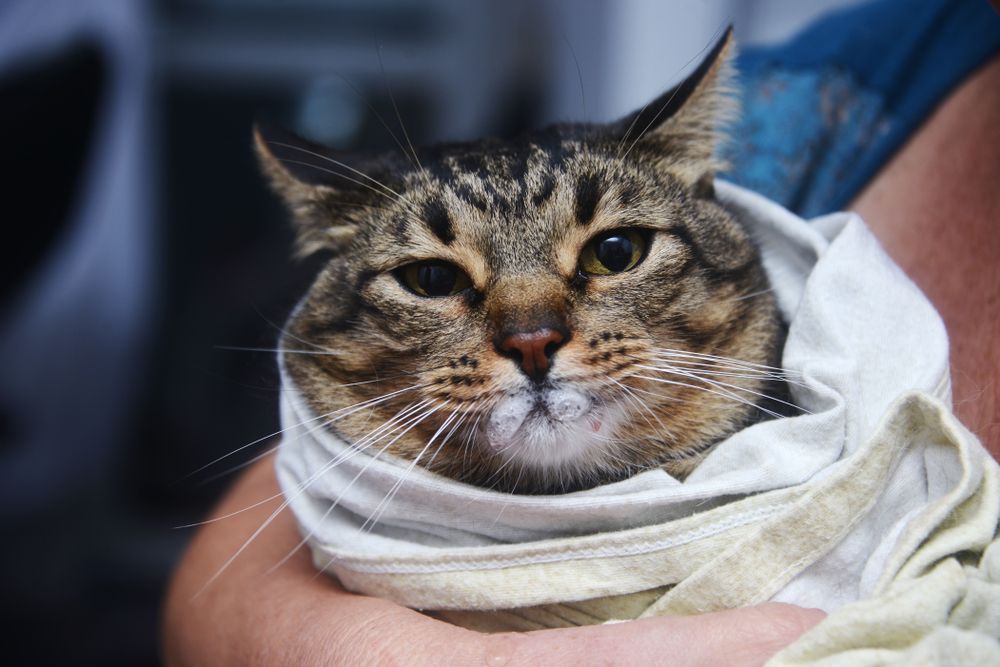
Wrapping your cat in a towel allows easy access to their mouth and helps you maintain control to avoid scratches or escape attempts.
Use a towel or thick blanket to wrap your cat. Place the towel on the table with your cat on the centre of the towel. Wrap the towel around your cat to make a “cat burrito” until just their head is visible. Be sure to wrap their feet in the towel, too.
Position Your Cat
Tuck your cat under your arm to make them feel secure. Using your non-dominant hand, place your palm over the cat’s skull and wrap your thumb and fingers around the sides of their head so you can gently raise their jaws so they are facing upward. I usually grip with my thumb and index finger.
Administer the Medication
Use your dominant hand to slowly administer the medication by placing the tip of the syringe or dropper into the side of your cat’s mouth (behind their fangs/canine teeth) and onto their tongue. Your cat might lick or lap up the medication from the syringe. Avoid depressing the plunger of the syringe too quickly on your cat’s tongue, as this might cause too much liquid to flood into your cat’s mouth and they could choke.
Praise Your Cat/Give Treats
Once you’ve given the medication, unwrap your cat and give them lots of praise. Offer them their favorite treat or wet food to reward them and to create a positive experience.
Clean Equipment
After you’ve administered the medication, be sure to rinse the syringe so it’s clean for the next medication dose. Put medicine back into the fridge if it needs to be refrigerated.
If it’s Not Working
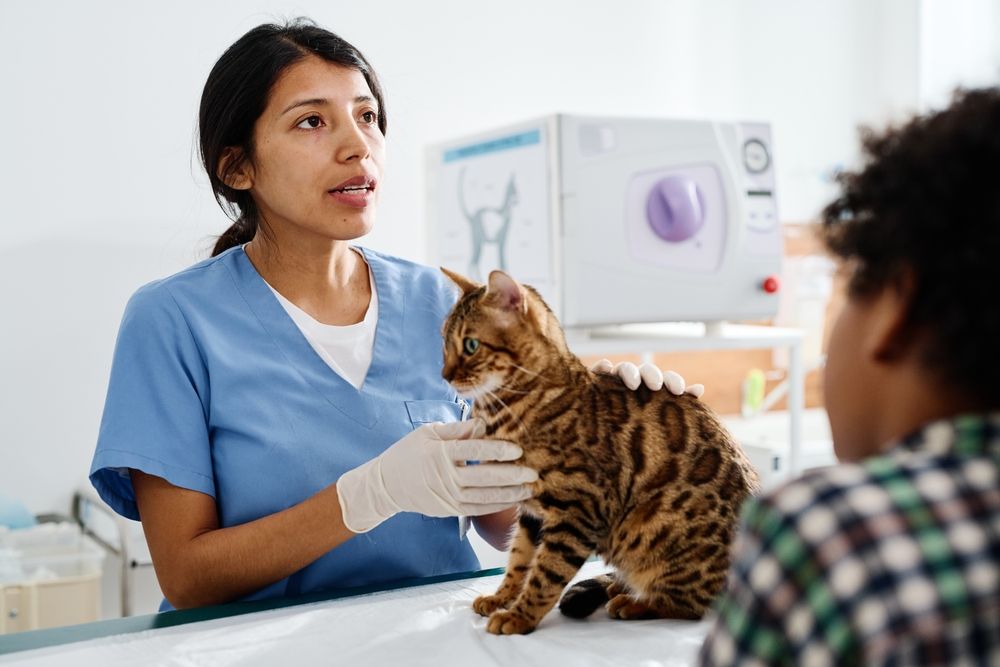
If you are struggling to administer your cat’s liquid medication, tell your vet so they can offer help.
Have you followed the above advice and it’s still not working? Even with the best methods, some cats are very good at evading medication. If you’re having trouble giving your cat liquid medicine, have a chat with your veterinarian.
They might be able to demonstrate giving the medicine to your cat for you or they might suggest other oral medications such as pills or capsules, or even injections instead.
Final Thoughts
Giving liquid medicine to cats might seem like a challenge, but most cats can be tempted to take medicine in their favorite wet food or a tasty treat.
If that doesn’t work, creating a “cat burrito” by wrapping your cat in a towel and administering the medication into the side of their mouth will likely work. Some cats are tricky to medicate, so if you’re still having trouble after trying these techniques, have a chat with your vet about alternative options like tablets or injections.
Also Read: 13 Common Cat Anxiety Medications: What You Need to Know
Frequently Asked Questions
How do you give an uncooperative cat liquid medicine?
Try to hide the liquid medicine in their favorite wet food or wrap them in a towel and administer it slowly into their mouth.
What is the easiest way to give a cat liquid medicine?
The easiest way to give a cat liquid medicine is to mix it into their favorite wet food or treat. This is the least stressful way for both you and your cat.
What if my cat won't swallow liquid medicine?
Most cats will swallow the liquid medicine if it’s slowly emptied administered into the side of their mouth. However if your cat won't swallow the liquid medication, or if you can't hold on to your cat to administer the medication, talk to your vet about other options, such as pills or even injections.
Is it OK to syringe water to cat?
You shouldn’t need to syringe water to your cat, unless it’s to wash down a medication. In that case, it’s OK to syringe a small amount of water slowly into the side of your cat’s mouth. If your cat isn’t drinking water or is dehydrated, avoid syringing and contact your vet instead.
Why does my cat foam at the mouth when I give medicine?
Your cat may foam at the mouth if they don’t like the taste of the medicine. Try disguising the medicine in food or treats. If that still doesn’t work, discuss other options with your vet, such as pills or injections.







